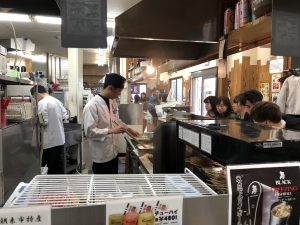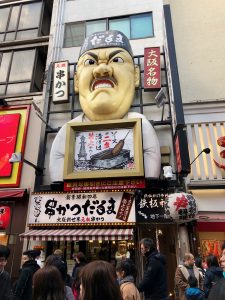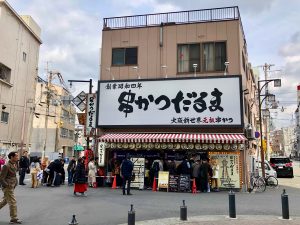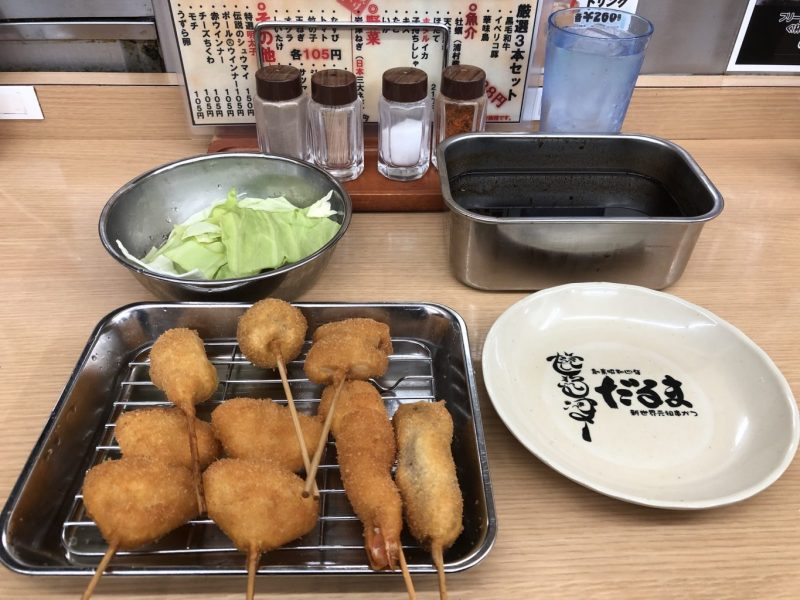
Our Recommendation
There are many possibilities in Osaka. But we recommend “Kushikatsu Daruma” (串かつだるま). (http://www.kushikatu-daruma.com – Sorry, they do not have an English web site) This small restaurant chain is an Osaka landmark, and is the place locals usually recommend. Their main shop, where it all started in 1929, is located at the base of the Tsutenkaku tower in the center of the Shinsekai area. Or, they also have a restaurant on Dotombori-dori as well as many other locations around Osaka. Around typical lunch and dinner hours, you should expect long lines.






